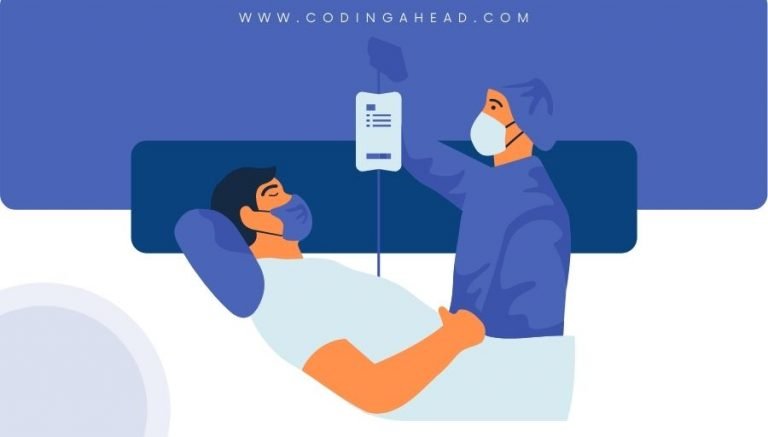How To Use CPT Code 95961
CPT 95961 describes the procedure of functional cortical and subcortical mapping by stimulation and/or recording of electrodes on the brain’s surface or depth electrodes. This article will cover the official description, procedure, qualifying circumstances, appropriate usage, documentation requirements, billing guidelines, historical information, similar codes and billing examples.
1. What is CPT Code 95961?
CPT 95961 can be used to report the initial hour of attendance by a physician or other qualified healthcare professional for functional cortical and subcortical mapping. This procedure involves the stimulation and/or recording of electrodes on the brain’s surface or depth electrodes to provoke seizures or identify vital brain structures. It is performed to localize the seizure originating area of the brain or to identify crucial areas for language, motor, sensory, and visual function.
2. Official Description
The official description of CPT code 95961 is: ‘Functional cortical and subcortical mapping by stimulation and/or recording of electrodes on brain surface, or of depth electrodes, to provoke seizures or identify vital brain structures; initial hour of attendance by a physician or other qualified health care professional.’
3. Procedure
- In this procedure, the provider applies electric current to a small area of the brain surface or through intracranial electrodes or probes placed on the brain’s surface.
- The goal is to provoke a seizure and map the brain to identify the seizure originating abnormal area or to locate crucial brain structures.
- This procedure is typically performed before or during surgery to guide the provider in removing the abnormal portion of the brain or to avoid damaging vital brain structures.
4. Qualifying circumstances
CPT 95961 is used when a physician or other qualified healthcare professional performs functional cortical and subcortical mapping using electrodes on the brain’s surface or depth electrodes. This procedure is typically performed for patients with epilepsy or other conditions that require the identification of seizure originating areas or vital brain structures. The provider must spend at least one hour in attendance for the initial mapping session.
5. When to use CPT code 95961
CPT code 95961 should be used when a physician or other qualified healthcare professional spends the initial hour in attendance for functional cortical and subcortical mapping using electrodes on the brain’s surface or depth electrodes. This code should not be used for subsequent hours of attendance or for other EEG testing procedures.
6. Documentation requirements
To support a claim for CPT 95961, the provider must document the following information:
- Reason for performing functional cortical and subcortical mapping
- Details of the procedure, including the use of electrodes and any stimulation or recording techniques
- Date and duration of the initial hour of attendance
- Findings from the mapping procedure, including the identification of seizure originating areas or vital brain structures
- Signature of the attending physician or qualified healthcare professional
7. Billing guidelines
When billing for CPT 95961, ensure that the provider spends at least one hour in attendance for the initial mapping session. If reporting only the professional component, append modifier 26 to the code. If reporting only the technical component, append modifier TC unless the hospital provided the technical component. Do not append modifiers for global services where one provider renders both the professional and technical components. Do not report CPT 95961 with other EEG testing procedures.
8. Historical information
CPT 95961 was added to the Current Procedural Terminology system on January 1, 1991. The code description was updated on January 1, 2013 to include the specific mention of attendance by a physician or other qualified healthcare professional.
9. Examples
- A neurosurgeon spends the initial hour in attendance for functional cortical and subcortical mapping using electrodes on the brain’s surface to identify the seizure originating area for a patient with epilepsy.
- A neurologist performs functional cortical and subcortical mapping using depth electrodes to identify vital brain structures before a surgical procedure for a patient with a brain tumor.
- A neurophysiologist spends the initial hour in attendance for functional cortical and subcortical mapping to identify crucial areas for language function in a patient undergoing brain surgery.
- A pediatric neurologist performs functional cortical and subcortical mapping using electrodes on the brain’s surface to identify the seizure originating area for a child with refractory epilepsy.
- A neurosurgeon spends the initial hour in attendance for functional cortical and subcortical mapping using depth electrodes to identify vital brain structures before a surgical procedure for a patient with Parkinson’s disease.
- A neurologist performs functional cortical and subcortical mapping using electrodes on the brain’s surface to identify the seizure originating area for a patient with a history of traumatic brain injury.
- A neurophysiologist spends the initial hour in attendance for functional cortical and subcortical mapping to identify crucial areas for motor function in a patient undergoing brain surgery.
- A pediatric neurologist performs functional cortical and subcortical mapping using depth electrodes to identify vital brain structures before a surgical procedure for a child with a brain malformation.
- A neurosurgeon spends the initial hour in attendance for functional cortical and subcortical mapping using electrodes on the brain’s surface to identify the seizure originating area for a patient with drug-resistant epilepsy.
- A neurologist performs functional cortical and subcortical mapping using depth electrodes to identify vital brain structures before a surgical procedure for a patient with a brain arteriovenous malformation.



